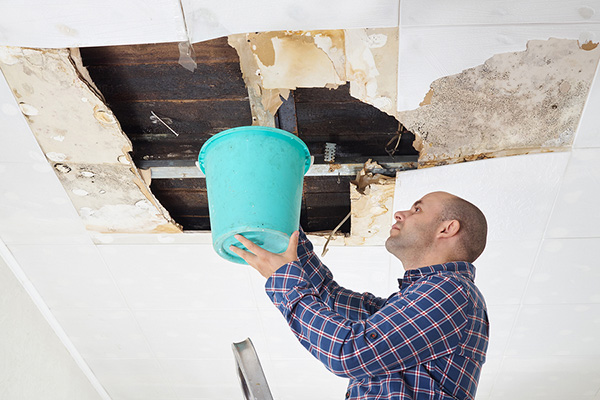One part of buying a property that doesn’t get talked about enough are the viewings. Considering how buying a home is one of the biggest life decisions you can make, the amount of time you spend viewing the property before bidding or buying is shockingly low. That’s why, with your limited viewing time it’s important to focus on the aspects that have the potential to cause the greatest headaches after going sale agreed, or closing a sale.
In Ireland when a sale is agreed on a property most buyers engage the services of an engineer to complete a structural survey before proceeding any further with the sale. These surveys are invaluable and can uncover any issues that might end up being a problem for you down the road.
But what about before you decide to take the plunge and make a bid?
When viewing a property we cannot stress enough how important it is for you to investigate the plumbing system. If you’re lucky enough to be viewing a new build you’re unlikely to find many issues – but that’s not to say you shouldn’t investigate, it’s always worthwhile taking a look to spot any potential issues.
With second hand properties, things can be very different. If you’re viewing an older property it’s important to try and gauge what sort of state the plumbing system is in to avoid any nasty future surprises.
Although many plumbing issues are quick fixes, a poorly maintained or ageing plumbing system is one of the biggest headaches you can face as a homeowner. If you’re armed with the knowledge that you’re facing into remedial works you’ll be able to make a more informed and deliberate bid to reflect the cost that will be involved if you proceed with the sale.
Before you take the leap and bid we recommend you check and assess these 8 plumbing areas.
1.Check around toilets, sinks, baths and taps
Although a relatively minor issue, the seals in your bathroom do have a lifespan. Silicon seals around your bath, shower and toilet form a barrier to prevent water damage, however they do wear down after a few years and can start slowly allowing water ingress. Even small amounts of water over long periods can cause a lot of issues in the spaces under your bathroom, from mould all the way to dry rot.
During your viewing, try to inspect the bathroom seals and assess what kind of state they’re in. If it’s an upstairs bathroom look at the ceiling below for any staining that might indicate there’s an issue.
If the bathroom seals are in terrible condition, don’t worry, resealing them is a quick fix that almost anyone can do. Home Channel on Youtube has a handy beginners video to show you how.
Video Guide: Home Channel DIY, How to reseal a bath, shower or sink – with Philippa Tuttiett
2. Water stains
Ceiling stains are probably the most obvious water stain that springs to mind, but water staining can also occur on walls, skirting boards or even on flooring so it’s important to keep your eyes peeled.
Water stains do not always mean there’s an active leak, a leak may have occurred in the past and been successfully fixed. However, if a water stain looks fresh or even damp to the touch you might have an issue.
Freshly painted ceilings can be an indication something is off, especially if patch painted. If you suspect this is the case try and investigate what’s going on directly above the stain. It could be something as simple as a poorly maintained shower seal that can be easily fixed, or something more serious like an attic tank leak or ingress of water through the roof.
3. Shut off valve
Does the property have a water shut off valve or stopcock? What sort of condition is it in? If you suddenly spring a leak will you be in a position to quickly turn the water off?
While a broken or old stopcock is not a dealbreaker, it’s a good indication of the level of care the previous owners had when it came to their plumbing system.
Try and locate the property shut off valve to see what you’re dealing with. If possible, open and close the valve. If you’re unsure where to find the valve or how to shut the water off check out our handy guide.
4. Boiler
Replacing a boiler is a significant outlay. When viewing a property there are a few quick checks you can make to try and determine if the boiler is in good nick.
How old does the boiler look? Is it clean or discoloured? Are there stains on the pipes under the boiler or any indication of rust stains around the boiler? This could mean the boiler is old and coming to the end of its life.
Is there a recent service sticker on the boiler? If it hasn’t been serviced in years problems could be lurking.
Some modern boilers have LED screens that display information about the boiler. Have a look for any error or fault codes and take a note of them e.g. On an Ideal Boiler F1 signals low water pressure while L6 indicates a flame detection fault.
5. Water pressure
Low water pressure can be the symptoms of a number of issues:
- A blocked or clogged pipe
- A leaking pipe
- Shut off valve is not open all the way
- Clogged tap filter (if the low pressure is only at one point)
- Build up of sediment
If the pressure is low at all taps apart from the cold tap at your kitchen sink you may just require a pump for some extra assistance – installation of a pump is not a big job in the grand scheme of things.
High water pressure is unusual in Ireland, but if it does happen it’s usually caused by your water supplier. Most domestic appliances are not designed to withstand high pressure so if you find yourself buying a property with this issue you should contact Irish Water as soon as possible to notify them.
6. Water hardness
To find out if the home you’re viewing is in a hard water area you can use the online Water hardness finder provided by Irish Water https://www.water.ie/help/water-quality/hard-water/
Hard water causes limescale to form. Limescale is a hard white calcium deposit that can leave a coating in appliances such as kettles and washing machines. In your hot water system, limescale can coat your immersion over time and cause it to be less effective.
A quick way to determine what type of water you have is to use try and foam up some soap, detergent or shampoo. If you’re in a soft water area your detergents and shampoos will bubble up easily but in a hard water area creating suds will be much harder.
If the water in the property is hard there will potentially be indications on the outside of the tap. In hard water areas limescale often builds up around the mouth of the tap and if not cleaned regularly a hard deposit will build up.
7. Plumbing type
Older properties could have gun barrel piping, this is an old material that is no longer in use. If you’re unsure what kind of pipe you’re looking at, gun barrel pipes are silvery in colour while modern piping is generally copper.
Gun barrel rusts from the inside out causing weak points that will eventually lead to leaks.
If you see gun barrel pipes in a property you’re viewing you need to be aware that this type of pipe has a lifespan and will need to be replaced at some point in the future.
8. Attic tank
If you can gain access to the attic it’s a good idea to have a look at the attic tank. Attic tanks are hardworking devices that feed your home with water daily, so it’s important they’re in good shape. Unfortunately, a leaking attic tank can cause huge issues. Water from the top floor has nowhere to go but downwards into bedrooms, bathrooms or worst case scenario all the way down to the ground floor.
Take a look and see is the tank plastic or stainless steel? If it’s stainless steel you’re looking at between 600 to 800 hundred euro to have it changed over to a more robust lightweight plastic version.
Our final tip is not to let a few plumbing issues put you off bidding on a house you love or one that ticks other boxes such as size and location. Instead calculate the cost of plumbing repairs you may need to make and factor it into your bid.
Are you buying a new home? Protect it from the most common cause of damage with the Leak Watch Smart Water Security System.



